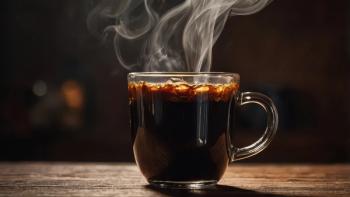
- The Column-02-04-2013
- Volume 9
- Issue 2
Cockroaches could help human hygiene
A team of scientists at the University of Regensburg (Regensburg, Germany) has discovered a microbial defence method used by emerald cockroach wasp (Ampulex compresa F.) larvae to prevent its food source, the cockroach, from putrefying.1
A team of scientists at the University of Regensburg (Regensburg, Germany) has discovered a microbial defence method used by emerald cockroach wasp (Ampulex compresa F.) larvae to prevent its food source, the cockroach, from putrefying.1
Food spoilage is a worldwide problem faced by insects and humans alike. Microbes produce toxins that degrade food and make it unpleasant to eat; and in the worst case scenario can cause serious diseases. Scientists believe that inspiration for new food hygiene strategies could be taken from studying the microbial defence strategies of insects.
Lead author, Dr Gudren Herzner (University of Regensburg, Regensburg, Germany), told The Column: “the most promising study species for such investigations are those that have close contact to microbe-rich environments or food sources”. The emerald cockroach wasp was chosen as a good study species because of its dependence on cockroaches as larval food.
The method that the emerald cockroach wasp “infects” its cockroach host is well studied. It stings the target twice: once to immobilize the cockroach, allowing the wasp to drag it to a “safe” location; the second sting is to the brain, rendering it sluggish and zombie-like. The wasp then “glues” an egg to the cockroach where it incubates for seven days. Following its incubation, the larva moves into the interior of the roach using the internal organs as a food source, until the death of the host.
Most people think of cockroaches as carriers of microbes and disease — not the ideal host or food source!
So the question was: How were the larvae able to defend their food source against other micro-organisms given that they were eating their host from the inside out?
The answer was presented during behavioural studies of the larvae. They observed the repeated deposition of a clear fluid by the larvae into the interior of the cockroach, and speculated that this could be the key.
Solid-phase microextraction (SPME) and gas chromatography–mass spectrometry (GC–MS) were performed to identify two major compounds within the fluid. For a greater sample volume, hexane extracts of roaches parasitized by the larvae were purified and fractionated by size-exclusion–high performance liquid chromatography (SE–HPLC) and analysed by GC–MS. The two compounds were identified to be (R)–(–)–mellein and micromolide.
Herzner said: “The antimicrobial defence strategies of insects have continuously been tested and refined by selective forces during evolution, and I think that we can learn a lot from Mother Nature. Studies like ours show how insects deal with these hazards and are not only scientifically very intriguing but also may, in the long term, provide inspirations for new applications.”
Reference
G. Herzner et al. PNAS Early Edition, (www.pnas.org/cgi/doi/10.1073/pnas.1213384110) (2012).
Articles in this issue
almost 13 years ago
Prehistoric cheesealmost 13 years ago
Market Profile: Ion Chromatographyalmost 13 years ago
Upping the Ante: Food Safety Trainingalmost 13 years ago
Tips and Tricks: GPC/SEC Dos and Don'ts For Data AnalysisNewsletter
Join the global community of analytical scientists who trust LCGC for insights on the latest techniques, trends, and expert solutions in chromatography.




